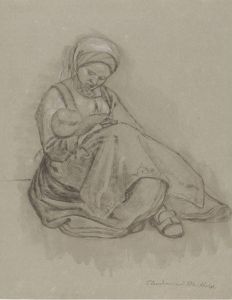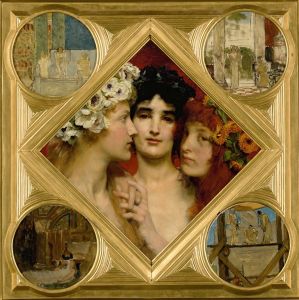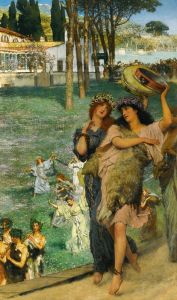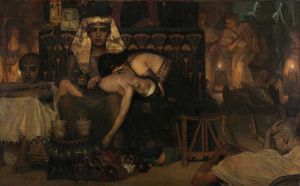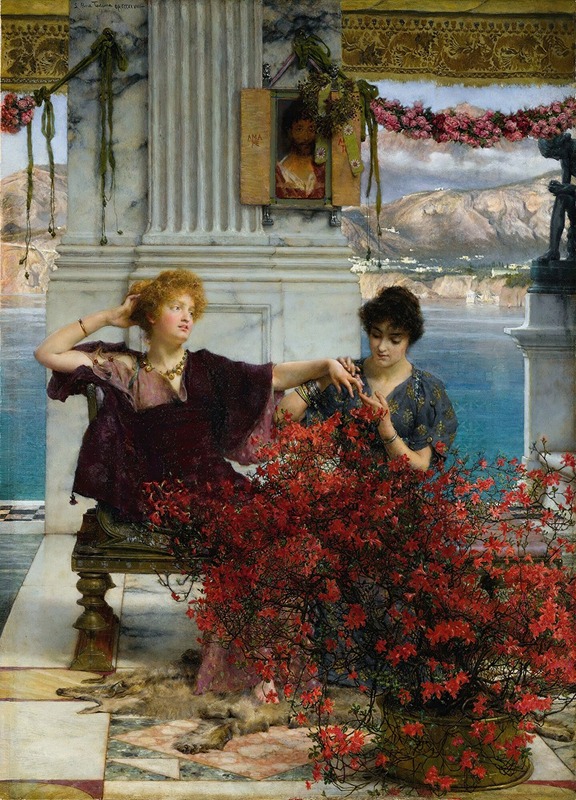
Love’s Jewelled Fetter
A hand-painted replica of Lawrence Alma-Tadema’s masterpiece Love’s Jewelled Fetter, meticulously crafted by professional artists to capture the true essence of the original. Each piece is created with museum-quality canvas and rare mineral pigments, carefully painted by experienced artists with delicate brushstrokes and rich, layered colors to perfectly recreate the texture of the original artwork. Unlike machine-printed reproductions, this hand-painted version brings the painting to life, infused with the artist’s emotions and skill in every stroke. Whether for personal collection or home decoration, it instantly elevates the artistic atmosphere of any space.
"Love’s Jewelled Fetter" is a painting by the renowned Dutch-born British artist Lawrence Alma-Tadema, who is celebrated for his depictions of the luxury and decadence of the Roman Empire. Alma-Tadema was born on January 8, 1836, in Dronrijp, Netherlands, and later became a prominent figure in the Victorian art scene in England. His works are characterized by their meticulous attention to detail, historical accuracy, and the use of vibrant colors.
Alma-Tadema's fascination with classical antiquity is evident in "Love’s Jewelled Fetter," which, like many of his paintings, draws inspiration from ancient Roman and Greek themes. His works often explore the daily life, architecture, and social customs of these ancient civilizations, providing a romanticized glimpse into the past.
The painting "Love’s Jewelled Fetter" exemplifies Alma-Tadema's skill in rendering textures and materials, particularly his ability to depict marble and precious stones with remarkable realism. This attention to detail is a hallmark of his style, which often involved extensive research and study of historical artifacts and sites to ensure accuracy in his representations.
Alma-Tadema's work was highly regarded during his lifetime, and he enjoyed considerable success and recognition. He was elected to the Royal Academy of Arts in London and was knighted in 1899, reflecting his significant contributions to the art world. His paintings were popular among the Victorian elite, who admired his ability to transport viewers to the opulent and exotic world of ancient Rome.
"Love’s Jewelled Fetter," like many of Alma-Tadema's works, captures a moment of intimacy and beauty, often featuring figures in classical dress engaged in leisurely activities. The painting's title suggests a theme of love and entrapment, possibly symbolized by the use of jewelry as a metaphorical "fetter" or restraint. This theme of love intertwined with elements of luxury and opulence is a recurring motif in Alma-Tadema's oeuvre.
Alma-Tadema's legacy endures through his influence on both his contemporaries and later generations of artists. His work has been celebrated for its technical precision and its ability to evoke the grandeur of ancient civilizations. Despite a period of decline in popularity after his death on June 25, 1912, Alma-Tadema's paintings have experienced a resurgence of interest, with art historians and collectors recognizing the unique contributions he made to the depiction of classical antiquity in art.
Today, "Love’s Jewelled Fetter" continues to be appreciated for its artistic merit and its place within the broader context of Alma-Tadema's body of work. His paintings remain in high demand, with many held in prestigious collections and museums around the world, where they continue to captivate audiences with their beauty and historical allure.











